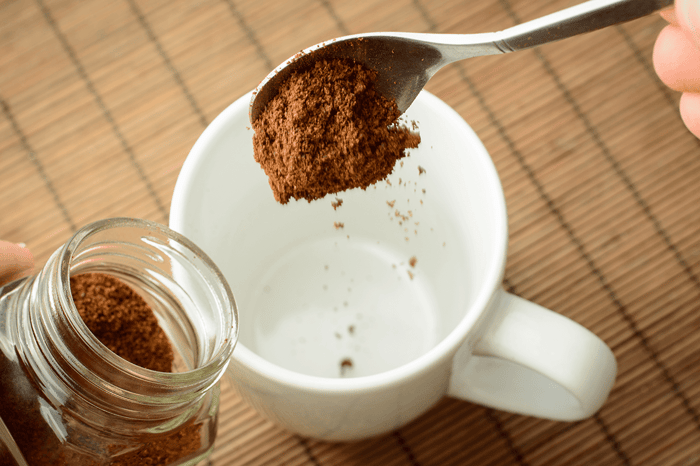It goes without saying (but… I’ll say it anyway) that instant coffee is kind of looked-down upon by most coffee snobs aficionados.
But is it deserved? Let’s find out.
First of all, what is instant coffee?
Instant coffee—if you want to call it that—is made from whole coffee beans that are roasted, ground, and brewed. So far, so good. But then, things take a weird turn. All of the water gets removed from the coffee, leaving behind just some dehydrated crystals.
When you add water to these crystals, it turns back into coffee. Of a sort.
Why exactly would you drink this stuff?
Simple. Instant coffee is cheap.
It’s fast.
It’s somewhat easier to make than good coffee.
But all that cheap comes with a price.

For one, instant coffee isn’t the greatest tasting coffee in the world. (I don’t think I’m telling any tales out of school here.) In fact, it pretty much sucks. Hard.
But it’s fast, right? And sometimes, you just need caffeine quickly.
We can all relate to that. But here’s the problem: if you’re expecting a quick energy boost from instant coffee, you’re probably going to end up feeling very disappointed.
That’s because instant coffee has less caffeine than coffee made from whole beans—usually, a lot less—as in, less than half the caffeine.
Instant coffee also contains higher levels of a chemical called acrylamide. Now what the hell is that? Well, acrylamide is actually created through natural chemical reactions in foods that occur during high-temperature cooking—including when coffee beans are roasted.
However, because of how instant coffee is made, it contains significantly higher concentrations of acrylamide than non-instant coffee—like more than twice as much in a lot of cases.
Despite acrylamide making its way into a lot of foods we cook, roast, or bake, consuming high levels of acrylamide is thought to be harmful. And while instant coffee still has less than the amount that has been shown to be harmful—there’s probably no real point in consuming more of it if you don’t have to.
(Especially for a coffee that’s lacking in aroma, flavor, caffeine, and just about everything else.)
Just something else to keep in mind when you’re weighing all of the reasons that real coffee is better than that off-the-shelf, dried-out crystal crap.
To show how big the difference actually is, though, here’s some of the most recent data from instant coffee samples provided by the FDA, along with some “normal” non-instant counterparts for comparison:
Coffee Name – Acrylamide (ppb)
- Folgers Black Silk (Ground Coffee) – 190 - 210
- Maxwell House (Ground Coffee) – 240 - 250
- Maxwell House (Instant Coffee) – 480 - 600
- Folgers Classic Roast (Instant Coffee) – 540 - 620
- Nescafe Clasico Dark Roast (Instant Coffee) – 770 - 840
- Price First (Instant Coffee) — 850 - 1080
Source: FDA.gov - Acrylamide Values in Individual Food Product Samples - 2015 (Excel Sheet)
Still feel the same about instant coffee?

Whether you like it or not, it does start from real coffee beans (before everything gets f*cked up).
And it is marginally easier to make than other, better smelling, better textured, better tasting, more caffeinated coffee.
Unusually high acrylamide levels aside, this form of coffee does have its place in the market I suppose. As long as people are willing to pay for crap coffee, it’ll probably never go away completely.
But for those who know better, it’s probably best to leave this stuff on the shelf and just keep on walking.
Prefer real coffee that’s strong, delicious, and has 4 times the caffeine of regular coffee? Check out Black Insomnia—the strongest coffee in the world.






